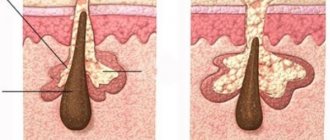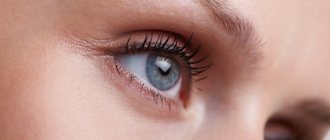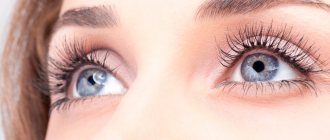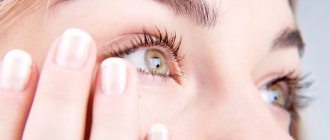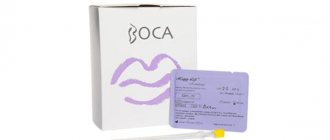Blepharoplasty "Cleopatra's Eye"
The image of Queen Cleopatra of Egypt is reflected not only in world fiction, but also in examples of ideals of beauty among different nations.
The almond-shaped eye shape given to Cleopatra by nature with amazing frequency is elevated by masters of art to the rank of “gold standard of beauty.” Aesthetic surgery, aimed at serving beauty, adopted the model of Cleopatra’s face and created a special method for correcting the shape of the eyes, called “Cleopatra’s Eye” and gaining increasing popularity in Russian cosmetology clinics. The Cleopatra Eye technique is a type of upper blepharoplasty. It is performed on the upper eyelid with raising the upper corner of the eye.
For the surgeon, two features of the “Cleopatra’s Eye” technique are significant, which serve as the basis for dividing the types of blepharoplasty into “classical” and “Cleopatra’s Eye”.
The first feature of the operation using the “Cleopatra's Eye” technique is a higher excision of the muscle and skin flap, which causes the lateral edge of the upper eyelid to be lifted upward and gives a small and characteristic bend in the middle of the projection of the eyeball onto the eyebrow.
The second feature is the surgeon’s work in the temporal region, during which he removes a wedge-shaped muscle flap, pulls the corner of the eye up and attaches it to the temporal fascia (canthopexy). It is canthopexy that allows you to strengthen the new shape of the eye and maintain the result for many years.
This technique allows you to create an anatomically intact almond-shaped eye without traces of a specially performed plastic surgery. Currently, surgery using the “Eye of Cleopatra” technique is one of the most popular in our clinics.
Indications for surgery using the “Eye of Cleopatra” technique:
- change in eye shape
- tired look
- ptosis (drooping) of the upper eyelid
- excess skin of the upper eyelids
- excess fatty tissue in the periorbital area
- drooping eyebrows and forehead skin
- laxity of the muscles of the periorbital zone
- wrinkles around the eyes
- exophthalmos – protrusion of the eyeball
- eye asymmetry
Contraindications to surgery using the “Eye of Cleopatra” technique:
- persistent arterial hypertension;
- systemic collagenoses;
- chronic infectious and viral diseases;
- acute inflammatory processes in the facial area;
- glaucoma;
- retinal detachment;
- diabetes;
- severe cardiovascular diseases;
- systemic connective tissue diseases (lupus erythematosus, scleroderma);
- disorders of the blood coagulation system;
- the presence of inflammatory elements on the skin of the eyelids.
Carrying out the operation:
The operation is carried out in four stages. The first stage is making a contour incision and removing skin from the outlined area of the surgical field. The next stage is the removal of excess orbicularis oculi muscle, which opens access to “fatty hernias”. When performing blepharoplasty using the “Cleopatra's Eye” technique, the excision is carried out with a vector to the middle of the eyebrow to achieve an anatomical almond-shaped shape. The incision should also include the temporal region, where canthopexy is performed after wedge excision. The third stage involves the isolation and removal of excess fatty tissue in the postorbital region. At the fourth and final stage, layer-by-layer stitching of the muscle and skin is carried out.
Anesthesia:
The operation is performed under local anesthesia; additional oral sedatives may be used. After the operation, an hour's observation of the patient's condition is sufficient; there is no need for the patient to stay in the hospital.
Rehabilitation requires compliance with the following rules:
- in the first days after surgery, avoid drinking large quantities of liquids, and also avoid drinking alcohol;
- take the antibiotic UNIDOX SOLUTAB for seven days - one tablet (at a dose of 100 mg) once a day, after meals;
- If there are noticeable bruises, use Traumeel S or Bruise OFF cream to speed up the resorption of hematomas. Apply the cream morning and evening to the hematoma area. It is strictly forbidden to apply cream to the seam area!
- sleep on your back for 4-5 days;
- avoid trauma to the operating area;
- refrain from visiting the bathhouse, sauna, solarium, swimming pool for 1 month;
- do not open wound coverings until the sutures are removed without the consent of the attending physician;
- Avoid intense physical activity for a month.
Postoperative rehabilitation takes from 5 to 10 days. The stitches are removed on days 6-9. If there are small traces of the suture after surgery, they are corrected by peeling or grinding methods in 1-3 sessions until the traces completely disappear.
Result:
The final result after the operation is observed after 3-4 months, when traces of the operation completely disappear, and lasts up to 20 years or more.
See the world through the eyes of Cleopatra
Blepharoplasty today is the best way to rejuvenate the look, making it brighter and more expressive. No makeup artist or cosmetologist can achieve the same results as a plastic surgeon. Makeup and various medications are good, but they give a temporary effect. Eyelid surgery is the highest aerobatics in aesthetic medicine, since it gives the patient the opportunity for a long time, looking in the mirror, to see himself many years younger.
It's no secret that when the upper eyelids are puffy and the outer corners of the eyes droop down, it gives the look a sad, tired expression. The reasons may be different: genetic predisposition, age-related changes, severe weight fluctuations, poor lifestyle, and so on. But this, of course, is not a verdict: this view can and should be corrected.
1 of 8
Blepharoplasty has been known for a very long time and is constantly being improved. Plastic surgeons have learned not only to strengthen the eyelid muscles and remove excess fat from them, but also to remove excess stretched skin. Today, eyelid surgery also solves stylistic problems, allowing not only to solve problems of appearance, but also to create a new image. One of the most striking examples is the “Cleopatra’s look” technique, which I use in my work, and every year more and more of my patients ask me to do just that look.
The name of the technique, by the way, comes from the image created on the silver screen by actress Elizabeth Taylor. She played Queen Cleopatra of Egypt in the 1963 film of the same name. There, for the first time, makeup was used, which visually gave the eyes an almond shape and visually raised their corners, making the look extremely expressive. It turned out to be so impressive that the film received four Oscars for its effects, and Taylor-Cleopatra had millions of imitators.
But with the invention of the “Cleopatra look” in plastic surgery, of course, many eyes turned in its direction. For example, such an operation was performed by actress and model Paris Hilton. Upper blepharoplasty helped actress Elena Yakovleva to rejuvenate, TV presenter Victoria Bonya and many others also improved their appearance.
Before surgery, the patient can choose the method of anesthesia: local or general. If the operation is performed only on the upper eyelids, then I prefer the first one, since the patient has his eyes closed and there is no need to open them. I operate carefully and painlessly, in complete comfort for the patient. All of the above allows me to send the patient home in good condition and mood within 1.5 - 2 hours after the operation.
If surgery is performed immediately on the upper and lower eyelids (the so-called circular blepharoplasty) or only on the lower eyelids, then I prefer general anesthesia, as this is more comfortable for the patient. During this operation, the eyes need to be opened, and this causes uncontrollable fear in the patient with all sorts of consequences. This may interfere with the operation and prolong its time. Despite the fact that the operation is performed under general anesthesia (and eyelid anesthesia is very delicate and gentle), 4-5 hours after its completion we send the patient home in satisfactory condition.
The purpose of blepharoplasty is to remove unnecessary fatty tissue from the eyelid, ridding the eyes of “bags”, remove various imperfections (for example, if the eyelids are asymmetrical), tighten and fix the skin at the “anchor zones”, also removing its excess. And, of course, if the patient has chosen the “Cleopatra look”, additionally, if necessary, the outer corners of the eyes can be pulled up (if they are drooping). This stage of the operation is called canthopexy. During it, the canthal ligaments located in this place are sutured.
I am often asked: do visible marks – scars – remain after blepharoplasty and for how long? And how long does it take for swelling and bruising to go away?
Firstly, I use a cosmetic suture, which ensures a perfect fit of the incision and without transverse scars. It is done in the natural skin fold of the upper eyelid, and on the lower eyelid - along the edge of eyelash growth, and therefore is completely invisible afterwards.
Alternatively, a transconjunctival technique may be performed, where an incision is made on the inner side (conjunctiva) of the lower eyelid. In this case, as a rule, self-absorbable threads are used. After about 4-5 days, the threads on the seam, if the incision was made externally, will be removed; healing lasts up to 10 days.
Secondly, during this time the swelling and bruises (which, as a rule, I don’t have) completely disappear. And swelling is minimal, since blepharoplasty is a minimally invasive operation, that is, with minimal access under the skin.
After about two weeks, the aesthetic results will become clearly visible, and after a couple of months you can safely look in the mirror and enjoy the effect on those around you, looking at them through the eyes of Queen Cleopatra.
Plastic surgeon
Kovalkova Evgenia Nikolaevna Moscow, Varshavskoe sh., 14, building 14 Phone Website: dr-kovalkova.ru
